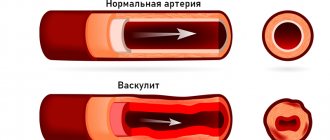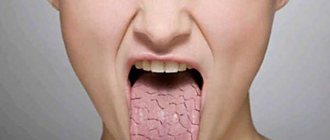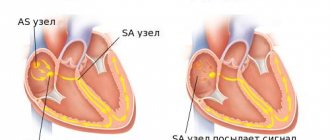Description of the disease
This is an infectious disease characteristic of southern, eastern and western Africa. Every year it is diagnosed in several tens of thousands of residents of the African continent. The infection often affects unwary tourists.
The causative agent of sleeping sickness is a parasite from the genus Trypanosomes. Hence the scientific name of the pathology. The popular name for the infection is associated with the main symptoms - fatigue and a constant desire to sleep.
Tsetse fly
The causative agent is a flat, oblong-shaped parasite, which can only be seen under a microscope; its average length is only 12-20 microns. Parasites are extremely mobile and can penetrate all organs of the human body.
There are two types of infection: Gambian and Rhodesian. Gambian sleeping sickness is common in western Africa, while the Rhodesian form of the infection is more common in the east and south of the continent. The parasites that cause the Gambian infection live near bodies of water, and those that provoke the development of Rhodesian African trypanosomiasis live in the savanna and in areas of deforested tropical forest. In addition, the first form affects people, and the second - animals.
African trypanosomiasis has been identified in 36 countries on the African continent. The mortality rate for sleeping sickness is higher than for HIV/AIDS. Over the past 150 years, 3 major epidemics have been recorded:
- 1896-1906;
- 1920;
- 1970
Today, thanks to the development of medicine, the disease has been brought under control.
Symptoms
After a tsetse fly bites, a painful nodule forms - this is a breeding ground for parasites. Reaching a certain amount, they spread throughout the body through the lymph and interstitial space, damaging all organs of the human body.
The immune system destroys most pathogens, but those that remain reproduce many new, more resistant microorganisms. As a result, a patient may simultaneously have several dozen varieties of this parasite. Over time, if the patient is not given proper treatment, the body gives up and symptoms characteristic of sleeping sickness arise.
Infection spreads from the site of the bite
It is worth noting that the Rhodesian form of the disease is more dangerous than the Gambian one. The symptoms are pronounced, the infection develops faster and is less treatable.
African sleeping sickness symptoms are:
- formation of a node at the site of the fly bite;
- temperature increase;
- sleep disturbance;
- terrible headaches;
- tachycardia;
- swollen lymph nodes on the back of the neck;
- swelling;
- absent-mindedness;
- weakness.
Inflammation at the site of the bite does not appear immediately, but 4-7 days after infection. The nodule is very painful, but may disappear on its own. If you do not seek help in time, diagnosing the disease will be much more difficult. Sleep disturbance does not always manifest itself as drowsiness. In some cases, especially at the beginning, insomnia may develop.
As the parasites multiply, other symptoms of the disease may appear:
- absent look;
- half-closed eyelids;
- drooping lower lip;
- indifference to food;
- isolation and aggression.
At the very last stage, signs of damage to the central nervous system appear:
- convulsions;
- epilepsy;
- paralysis;
- coma.
As a rule, death occurs after coma.
Rhodesian infection provokes myocarditis and contributes to a decrease in immunity. As a result, the patient becomes infected with many concomitant infections that are in no way related to the parasite. With this form of the disease, the patient may die even before drowsiness appears. But doctors cannot always make the correct diagnosis.
Despite the fact that the Gambian form of the disease develops much more slowly, it cannot be called safe. Stages of exacerbation are followed by remissions, and the parasite itself can live in the human body for months. Characteristic symptoms appear only when damage to the nervous system reaches a critical level.
In addition, one must take into account the fact that, without knowing the true cause of fever, enlarged lymph nodes and fatigue, the patient receives inappropriate treatment and can infect many people with this dangerous disease.
Forms, stages and symptoms of sleeping sickness
There are 2 types of African trypanosomiasis:
- Trypanosoma brucei gambiense is found in western Africa. More than 90% of trypanosomiasis cases are associated with this type of parasite. Symptoms appear many years after infection. Unfortunately, the first signs appear only when the infection penetrates the central nervous system. Often brain damage is irreversible. Humans are the primary host for this trypanosome.
- Trypanosoma brucei rhodesiense was found in eastern Africa. It causes 3-10% of all cases of encephalitis lethargica. The parasite develops quickly, so the first symptoms appear a few days after infection. For this parasite, humans are the intermediate host. The main “target” of this subspecies of trypanosomes is domesticated and wild animals.
There is a special type of sleeping sickness - American trypanosomiasis (Chagas disease).
These parasites are transmitted by triatomine bugs. They are widespread in South America. Symptoms of sleeping sickness vary at different stages. At the site where trypanosomes enter the body (a wound from a fly bite), a chancre (trypanoma) is formed. This is a knot that looks like a boil. It is usually very painful. It goes away on its own and leaves a scar. Along with trypanoma, a specific rash appears on the body - large cherry spots (trypanids). The limbs and face also swell.
Stages of sleeping sickness:
- Hemolymphatic. During this phase, the pathogen multiplies in the subcutaneous tissue, lymph and blood. This stage is characterized by fever, pain and enlargement of the posterior cervical lymph nodes, malaise, headache, itching and pain in the joints. Sometimes cardiac arrhythmias are observed due to severe intoxication. The duration of the early stage is from several months to several years.
- Neurological. This is the terminal (last, fatal) stage of lethargic encephalitis. It begins after parasites invade the brain. Sleep distortion appears. Drowsiness occurs during the day. You can fall asleep even while doing simple homework. Subsequently, the gait changes, speech becomes unintelligible, salivation increases, and tremor of the tongue and limbs appears. People in this phase of the disease are apathetic and sleepy. At the terminal stage, epileptic seizures and convulsions occur. These signs are harbingers of coma and death.
If trypanosomiasis is not treated, the person will die.
Diagnosis of the disease
If clinical symptoms appear, you should consult a doctor as soon as possible. You need to tell in detail which countries you have visited in recent months and whether you have had any insect bites.
Contact your doctor at the first sign of symptoms
Symptoms and relevant medical history are the basis for making a preliminary diagnosis. However, treatment will not begin until laboratory tests confirm trypanosome infection. To do this, analyze venous blood, cerebrospinal fluid and lymph. If live trypanosomes are found in the samples, the diagnosis is confirmed.
In addition, a biopsy of enlarged lymph nodes and a nodule at the site of the bite may be required if it does not go away by the time of the examination. If the presence of the Rhodesian parasite is suspected, it is quite difficult to make an accurate diagnosis. Doctors infect rats or mice; if trypanosomes are detected in them after 2-3 days, the disease is confirmed. Thus, you can easily determine the type of pathogen, because the second form of the disease is not terrible for animals.
Prevention and treatment
Before traveling to a country where tsetse flies are found, you must be vaccinated with Pentamidine. It is injected into one of the large muscles of the human body. Vaccination can be done no more than once every 6 months. The drug is not safe, therefore, before using it, consultation with an infectious disease specialist is necessary. This therapy is typically given to people who work in African countries due to the high risk of encountering insects.
Anti-mosquito clothing
Of course, it is better to refrain from visiting such countries altogether (unless absolutely necessary). Therefore, it is better to choose the northern territories of the African continent for relaxation. If a person enters the habitat of tsetse flies, which cause the disease, precautions must be taken:
- light-colored clothing covering the arms, legs and neck;
- use of special insect repellents (ointments, aerosols).
If you become infected, you must seek help as quickly as possible. The effectiveness of treatment depends on how severely the patient’s body is affected. Modern drugs can completely destroy parasites, but if the central nervous system is disrupted, medications may be powerless.
Sleeping sickness is not easy to cure even with an abundance of antiparasitic drugs. Pentamidine is used for both prevention and treatment at the initial stage. This treatment is not always effective, since the product does not affect all strains of parasites. The drug has a number of side effects:
- nausea or vomiting;
- tachycardia;
- arterial hypotension.
Rarely, rashes, abscesses, and liver dysfunction occur.
The drug used to treat Rhodesian sleeping sickness is Suramin. It is highly effective in the early stages. Has many serious health consequences:
- itching;
- fever;
- photophobia;
- nausea or vomiting;
- arterial hypotension;
- epilepsy.
- Suramin is used under the strict supervision of a specialist, since in 1 out of 20 thousand cases the drug is fatal.
At more severe stages of the disease, Melarsoprol is used. The drug is extremely toxic, side effects caused by Melarsoprol:
- high fever;
- tremor;
- headache;
- violation of speech functions;
- coma;
- epileptic seizures;
- death.
Symptoms of poisoning are often present: vomiting and abdominal pain.
Gambian sleeping sickness is treated with Eflornithine. The effectiveness of the drug against this strain is more than 90%. Treatment may be accompanied by diarrhea, anemia, epileptic seizures, thrombocytopenia and hearing loss. The main reason why the drug has not come into widespread use is the long course of treatment and high doses.
All medications used in the treatment of sleeping sickness are dangerous and can lead to serious consequences. But without them, the patient will face inevitable death.
How to prevent African trypanosomiasis
A vaccine for sleeping sickness has not been developed. The main method of prevention is the destruction of the vector. Tsetse flies are repelled with special insecticide-repellents. Shrubs around residential settlements are also being cut down because insects live in them. People are advised to use personal protective equipment: mosquito nets for windows, long sleeves, and repellent sprays.
During epidemics, all residents and visitors are prescribed prophylaxis with pentamidine. In a prophylactic dose, it poses a minimal threat to the body.











